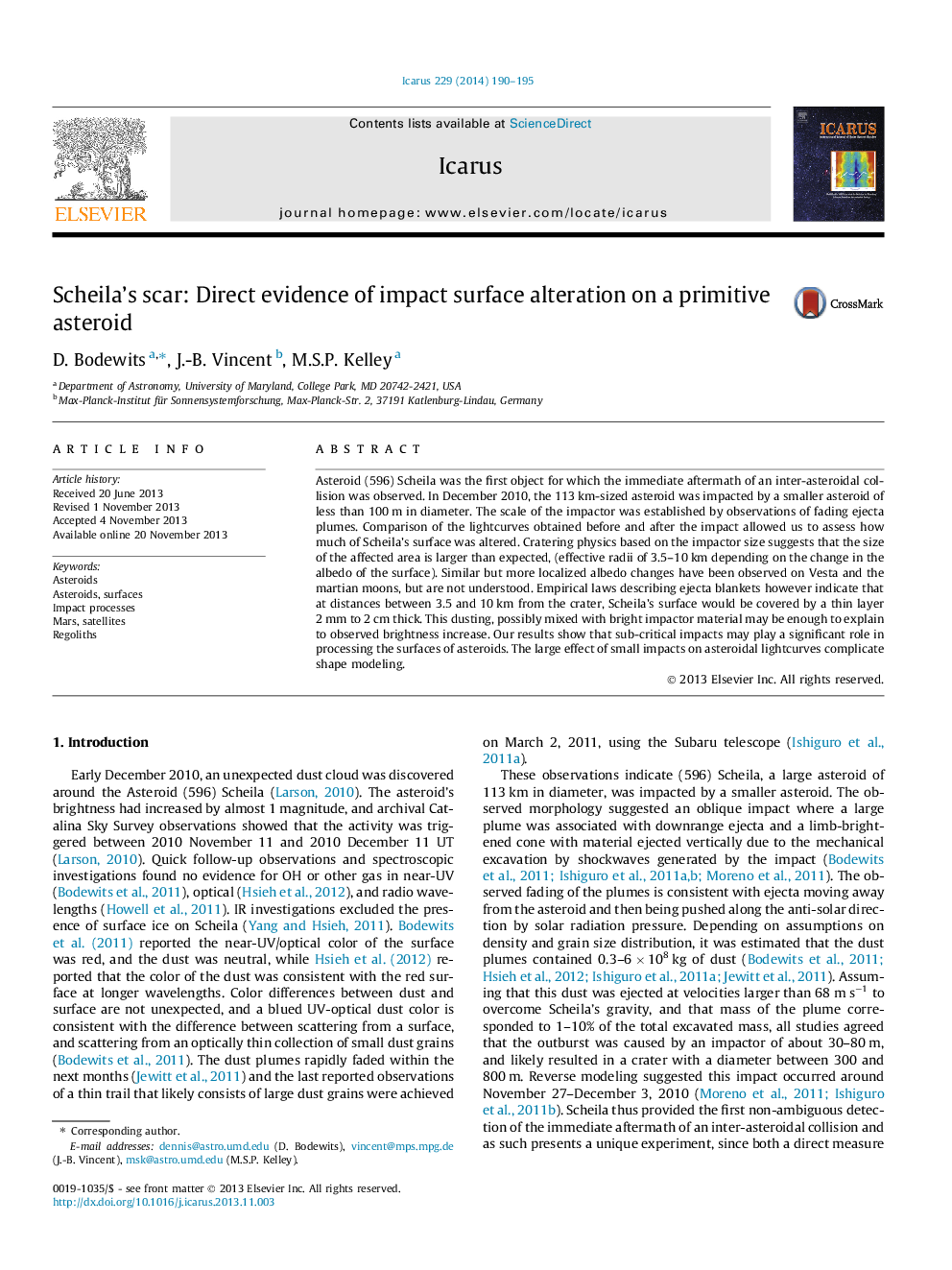| Article ID | Journal | Published Year | Pages | File Type |
|---|---|---|---|---|
| 8138858 | Icarus | 2014 | 6 Pages |
Abstract
Asteroid (596) Scheila was the first object for which the immediate aftermath of an inter-asteroidal collision was observed. In December 2010, the 113Â km-sized asteroid was impacted by a smaller asteroid of less than 100Â m in diameter. The scale of the impactor was established by observations of fading ejecta plumes. Comparison of the lightcurves obtained before and after the impact allowed us to assess how much of Scheila's surface was altered. Cratering physics based on the impactor size suggests that the size of the affected area is larger than expected, (effective radii of 3.5-10Â km depending on the change in the albedo of the surface). Similar but more localized albedo changes have been observed on Vesta and the martian moons, but are not understood. Empirical laws describing ejecta blankets however indicate that at distances between 3.5 and 10Â km from the crater, Scheila's surface would be covered by a thin layer 2Â mm to 2Â cm thick. This dusting, possibly mixed with bright impactor material may be enough to explain to observed brightness increase. Our results show that sub-critical impacts may play a significant role in processing the surfaces of asteroids. The large effect of small impacts on asteroidal lightcurves complicate shape modeling.
Related Topics
Physical Sciences and Engineering
Earth and Planetary Sciences
Space and Planetary Science
Authors
D. Bodewits, J.-B. Vincent, M.S.P. Kelley,
